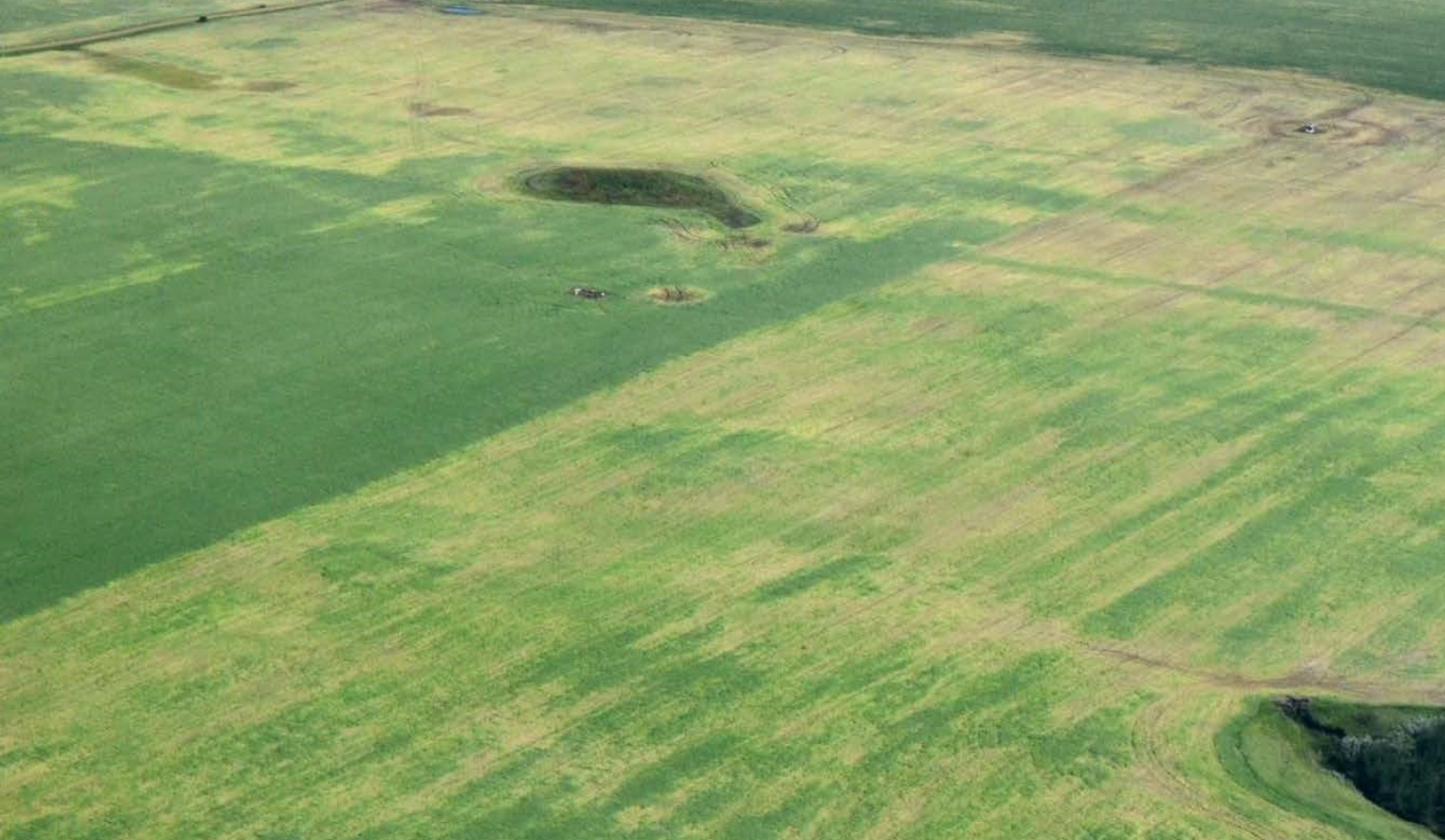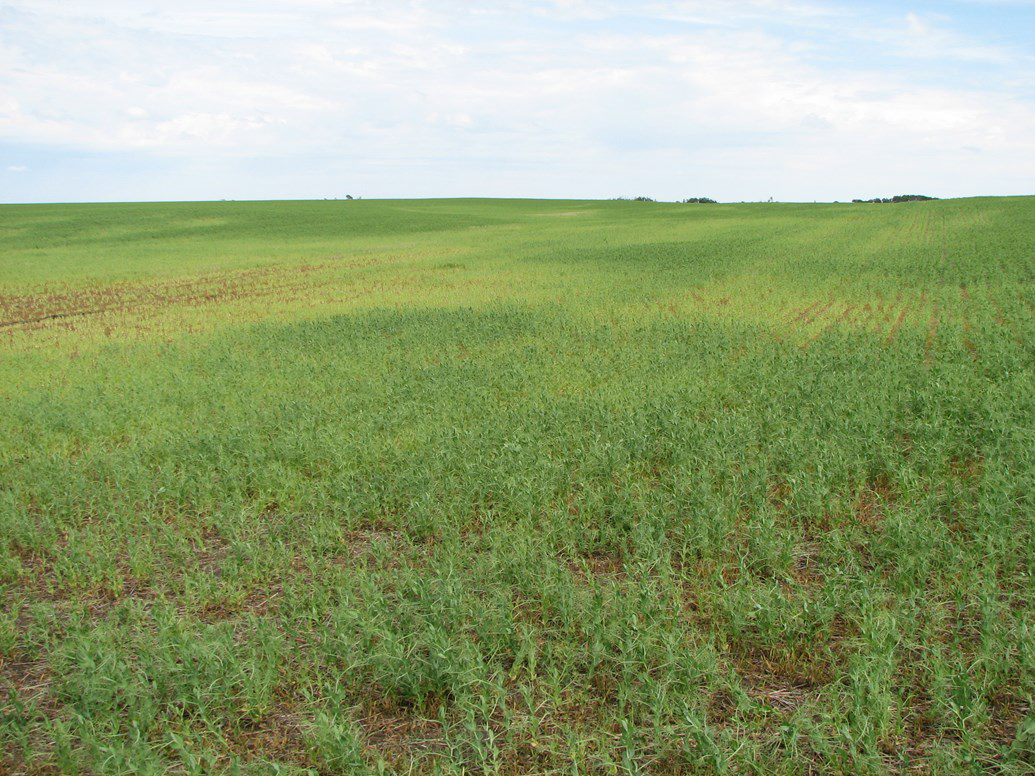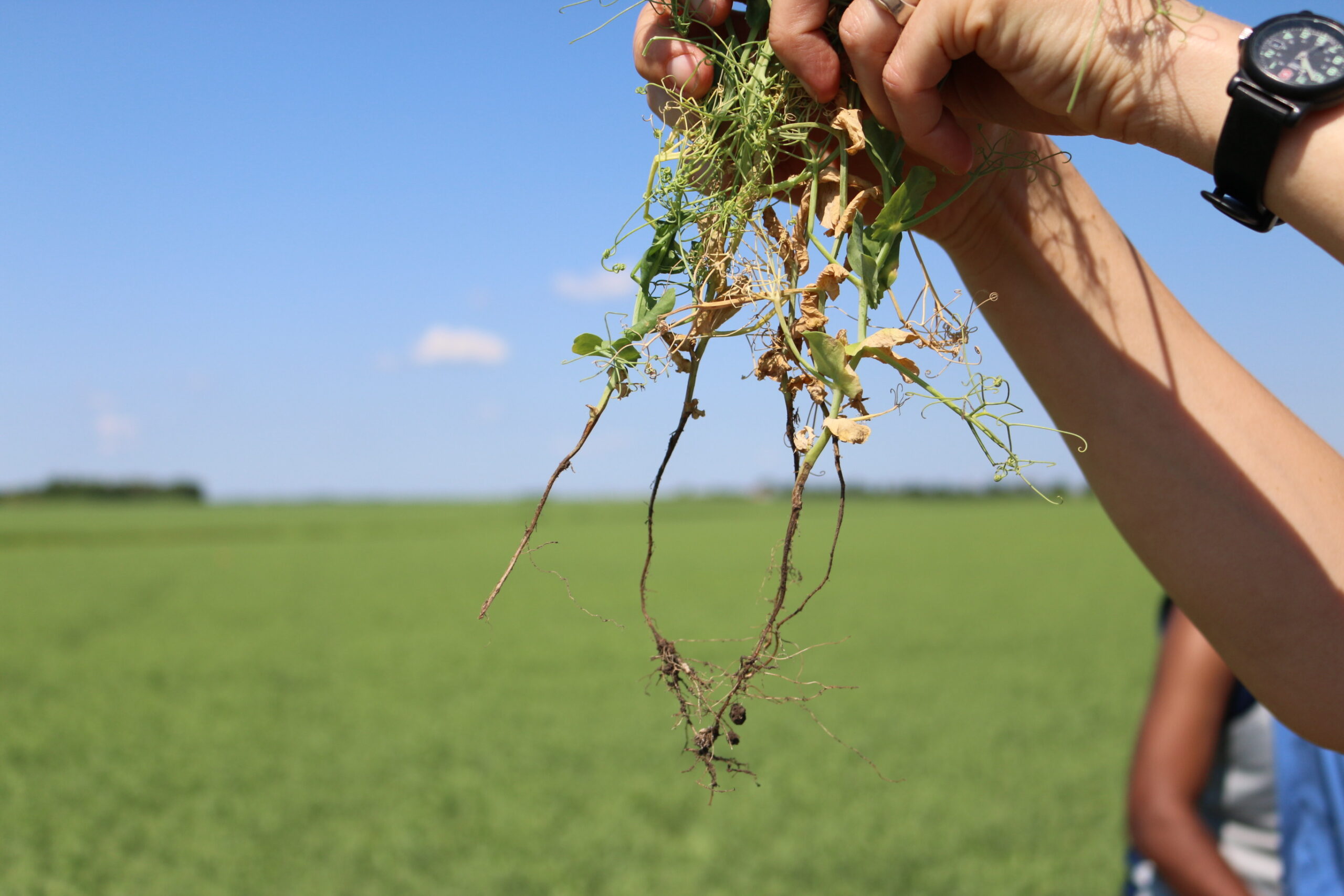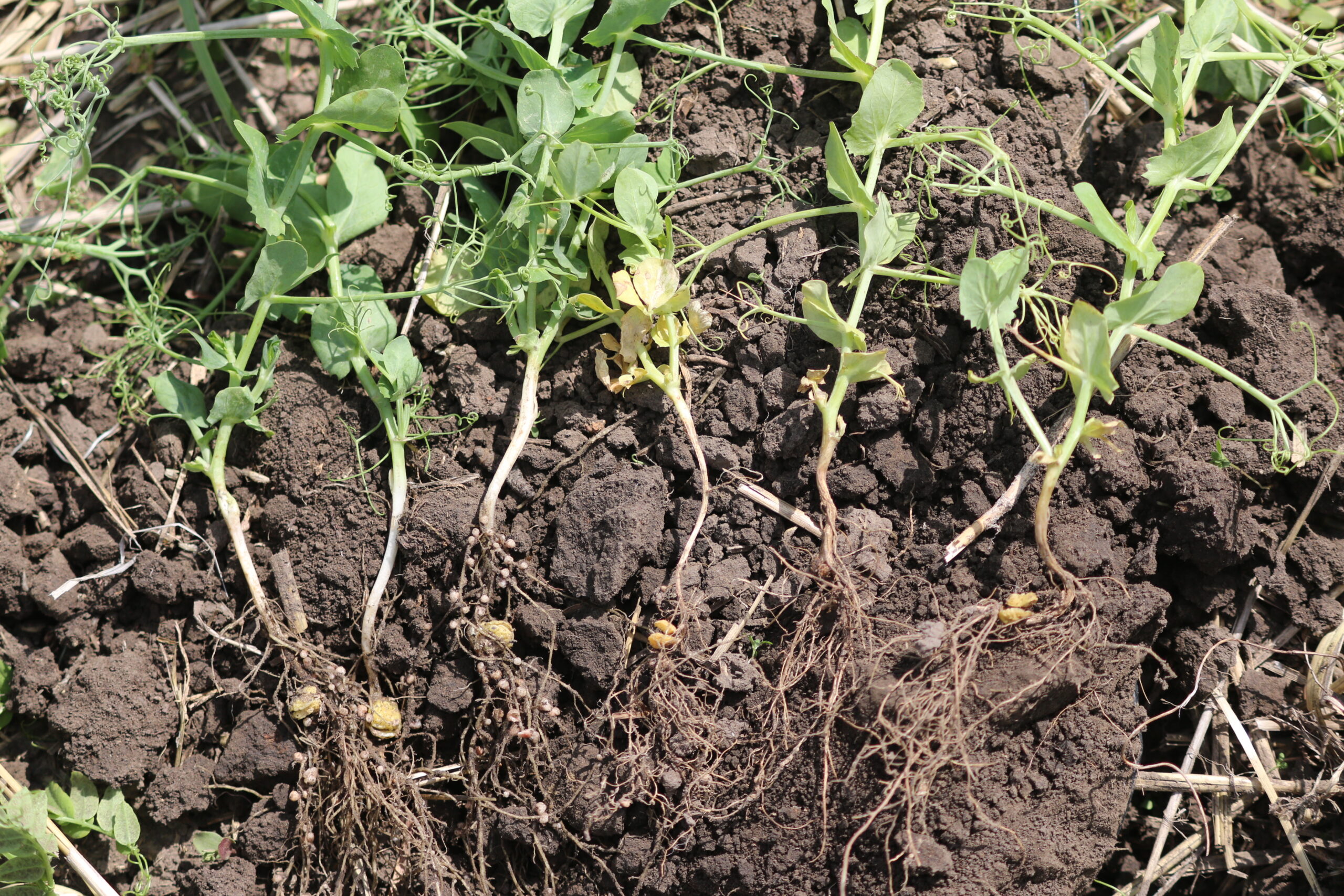The battle against Aphanomyces root rot continues to be waged across Saskatchewan and Alberta pea fields. Currently, producers have very few options to manage the disease, other than to extend rotations and to avoid planting susceptible pulses into high risk fields. Disease surveys have found that the pathogen is resilient and can survive in Prairie soils. Until recently, researchers, growers, and agronomists did not have an idea of what threshold of oospores in various Saskatchewan soil zones would be required to cause symptoms of the disease, and how root rot inoculum is distributed in the soil of infected fields.

Dr. Syama Chatterton from Agriculture and Agri-Food Canada’s Lethbridge station has developed an infectivity model to determine the levels of Aphanomyces inoculum in Saskatchewan soils required for the development of the disease, as well as how the inoculum is spread throughout infected fields. The purpose of this research was two-fold, “We wanted to develop a method by which producers could test their fields to determine if 1) they are at risk of Aphanomyces root rot, and 2) if they have had a history of root rot, to be able to test fields to determine when they are safe to plant into peas or lentils again,” says Chatterton. The infectivity model that she has created is being used by soil test labs to help quantify the level of root rot oospores in the soil, therefore identifying the risk of infection prior to planting.
To establish soil test recommendations, Chatterton sampled soils from various fields at depths of 0 to 20 centimetres (cm), 20 to 40 cm, and 40 to 60 cm. She found that while the Aphanomyces inoculum was highest in the top layer of soil, it could also still be detected in the 40 to 60 cm zone, in reduced amounts. Positive samples also occurred in field samples where water moved or tended to collect. “Our findings have allowed us to develop soil sampling recommendations for Aphanomyces testing,” says Chatterton. “Soil samples should be taken from the top 20 cm of soil, removing as much surface stubble as possible.”
Chatterton was also able to determine, using DNA diagnostic analysis, that the threshold for Aphanomyces inoculum in the soil that would lead to disease development was 100 oospores per gram of soil. The soil zone that was most susceptible was the Dark Brown soil zone, followed by Brown and Black soil zones. The DNA diagnostic tool can also test for Fusarium species as well as Aphanomyces, as the Fusarium pathogens are often part of the overall root rot complex.
For the future, Chatterton wants to validate the threshold levels that have been determined by testing field soils for actual quantities of the pathogen and comparing to in-crop disease levels.
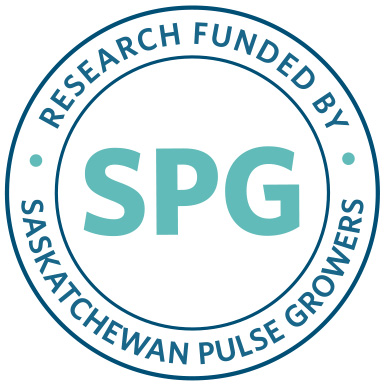
Published November 2018
